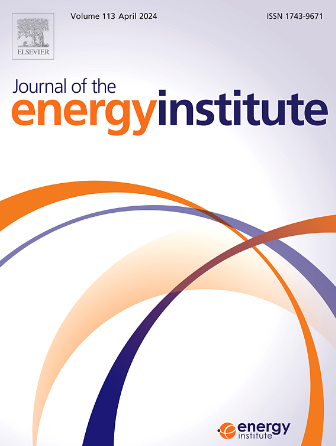Insights into the role of fuel structure and blending in soot formation for C1–C4 hydrocarbon flames
IF 5.6
2区 工程技术
Q2 ENERGY & FUELS
引用次数: 0
Abstract
Soot, a carbonaceous particle formed during the incomplete combustion of hydrocarbon fuels, not only reduces combustion efficiency but also poses significant risks to human health and the atmospheric environment. The formation of soot is a complex process involving physico-chemical transformations, and variations in fuel structure and fuel blending significantly impact soot production. Therefore, understanding the mechanisms of soot formation in C1–C4 hydrocarbon fuel flames and the associated influencing factors is crucial for effective soot emission control. This paper systematically reviews the primary mechanisms of soot formation in hydrocarbon flames. It further summarizes the research progress on soot formation during the combustion of C1–C4 hydrocarbons, with particular focus on how changes in fuel structure and blending affect soot formation. The influence of carbon chain length and saturation on soot formation is discussed, as well as the synergistic effects of blended fuel combustion. Lastly, the impact of non-hydrocarbon additives (e.g., CO, NH3/H2, CO2/H2O) on soot formation is examined, highlighting the chemical coupling between hydrocarbon and non-hydrocarbon components. These findings provide valuable insights for understanding soot formation, optimizing fuel properties, mitigating soot emissions, and advancing cleaner combustion technologies.
求助全文
约1分钟内获得全文
求助全文
来源期刊

Journal of The Energy Institute
工程技术-能源与燃料
CiteScore
10.60
自引率
5.30%
发文量
166
审稿时长
16 days
期刊介绍:
The Journal of the Energy Institute provides peer reviewed coverage of original high quality research on energy, engineering and technology.The coverage is broad and the main areas of interest include:
Combustion engineering and associated technologies; process heating; power generation; engines and propulsion; emissions and environmental pollution control; clean coal technologies; carbon abatement technologies
Emissions and environmental pollution control; safety and hazards;
Clean coal technologies; carbon abatement technologies, including carbon capture and storage, CCS;
Petroleum engineering and fuel quality, including storage and transport
Alternative energy sources; biomass utilisation and biomass conversion technologies; energy from waste, incineration and recycling
Energy conversion, energy recovery and energy efficiency; space heating, fuel cells, heat pumps and cooling systems
Energy storage
The journal''s coverage reflects changes in energy technology that result from the transition to more efficient energy production and end use together with reduced carbon emission.
 求助内容:
求助内容: 应助结果提醒方式:
应助结果提醒方式:


